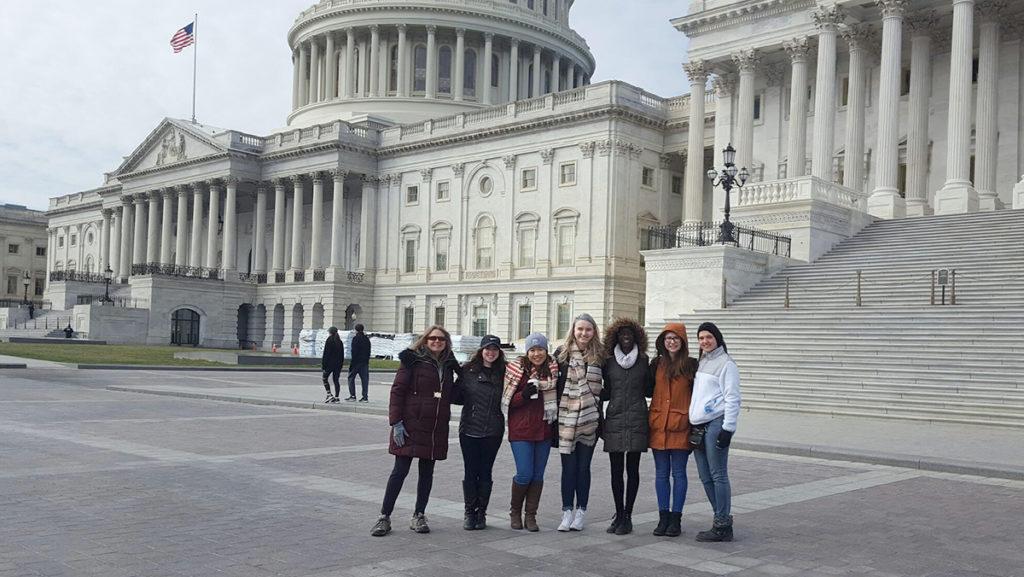Sophomore Katherine Siple spent her spring break on the shores of the Outer Banks, but not tanning or swimming. She was putting recycled oyster shells in mesh bags, which were eventually placed into the ocean to hopefully become a living reef for oysters.
She volunteered with the North Carolina Coastal Federation in the Outer Banks as part of one of five Alternative Spring Break trips offered yearly by the Office of Student Engagement and Multicultural Affairs. This year, students worked with organizations in Virginia, North Carolina, Canada, Michigan and Washington, D.C. Locations for the trip vary every year, but are generally located in the Northeast and the upper south, said Don Austin, assistant director of community service and leadership development in OSEMA.
This year, the applicants were most interested in attending the Outer Banks service trip in North Carolina, he said.
He said the programs try to implement social justice and environmental conservation themes into their services. Additionally, he said, the goal is to help students become aware of the impact the organizations they are working with have on communities.
“The purpose of the trips are so that students use their experiences to learn and use their critical analysis to draw their own conclusions,” he said.
Siple said volunteering in the Outer Banks was refreshing and that it mentally prepared her for what the rest of the semester has in store.
“It definitely helped me find my center in terms of my mind, body and spirit. It has been such an eye-opening experience to learn about the environment of N.C. and be able to help and know that we made a meaningful impact through our hard work,” she said.
Sophomore Christine Bednarz volunteered in Toronto, Canada, with Sistering, a nonprofit that aids homeless and marginalized women. She said her tasks changed day to day but she helped with activities such as food preparation in the kitchen, serving the food to women, organizing the food pantry and putting together Sistering’s various programs.
“It was really amazing to get to know the women the organization benefits, as well as meeting the people who make everything happen,” Bednarz said.
Bednarz said she enjoyed working with women one-on-one the most. On the third day, the volunteers gave women in the program manicures.
“As we were leaving, I was waving goodbye to one of the women, and she squeezed my hand and said, ‘Thank you,’ with a tear in her eye,” Bednarz said. “That moment made it really clear to me that although on the surface our contribution may seem small, it really makes a significant difference for the women there.”
Junior Maia Rumsey volunteered with multiple food organizations in Washington, D.C., working on various projects providing food for low-income residents.
“It’s definitely opened my eyes to how much work is put into running these nonprofits, especially the ones targeting hunger and poverty,” she said.
Reflecting on her overall experience, Rumsey said there were challenges, like having to stand up most of the day, but overall, she enjoyed her experience.
“I definitely learned that I want to help more [and] that there’s a lot of things that need to be addressed, and I want to be a part of the solution to the many problems that there are not only in the U.S., but in a global sense as well,” Rumsey said.
Siple said that from her Alternative Spring Break trip, she was able to bond with the other students through speaking about the experiences on the trip that impacted them.
“I got a fresh perspective on the world and learned so much about the environment and other people,” she said. “It was a very relaxing and restorative experience that I would definitely recommend to anyone who is interested in doing an Alternative Spring Break in the future








